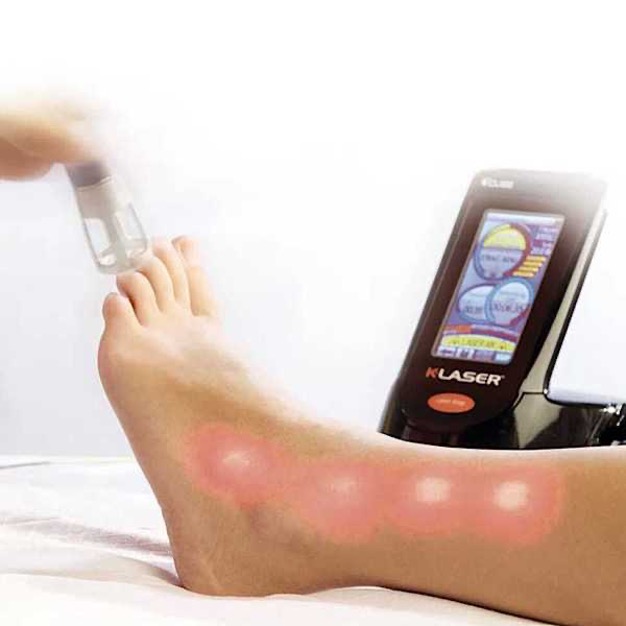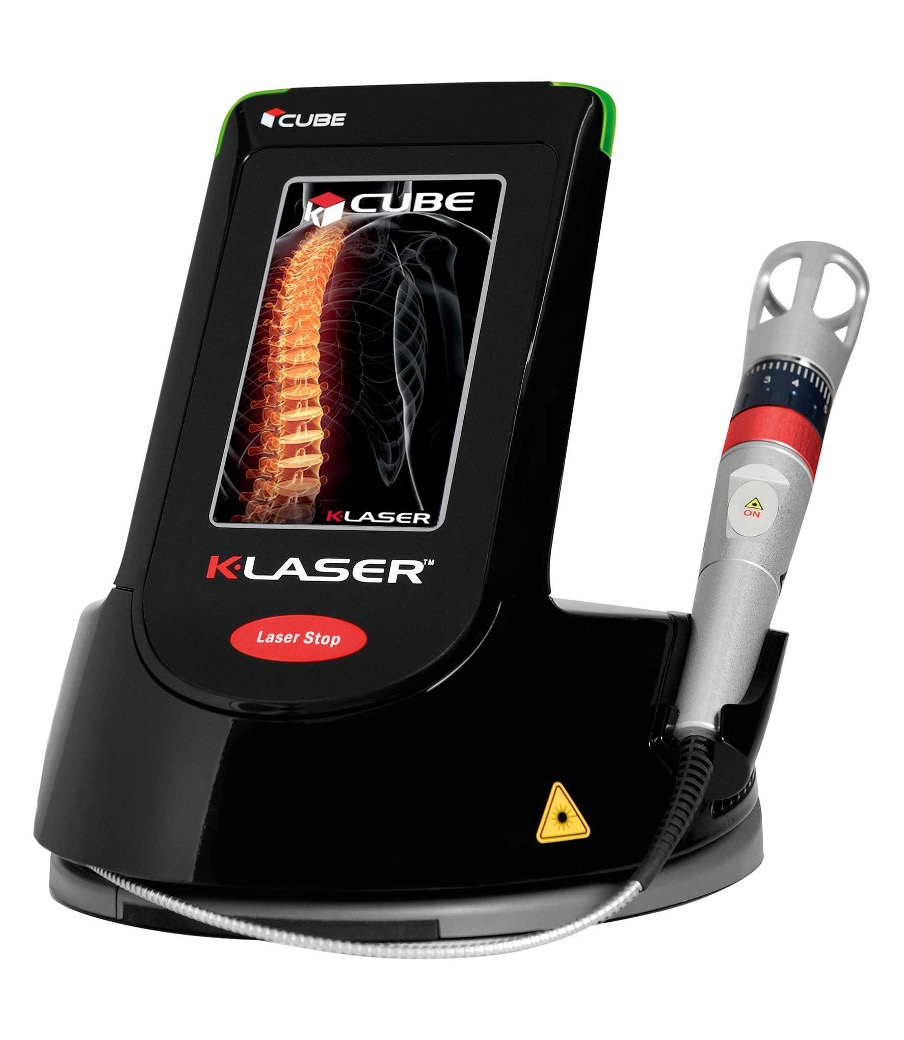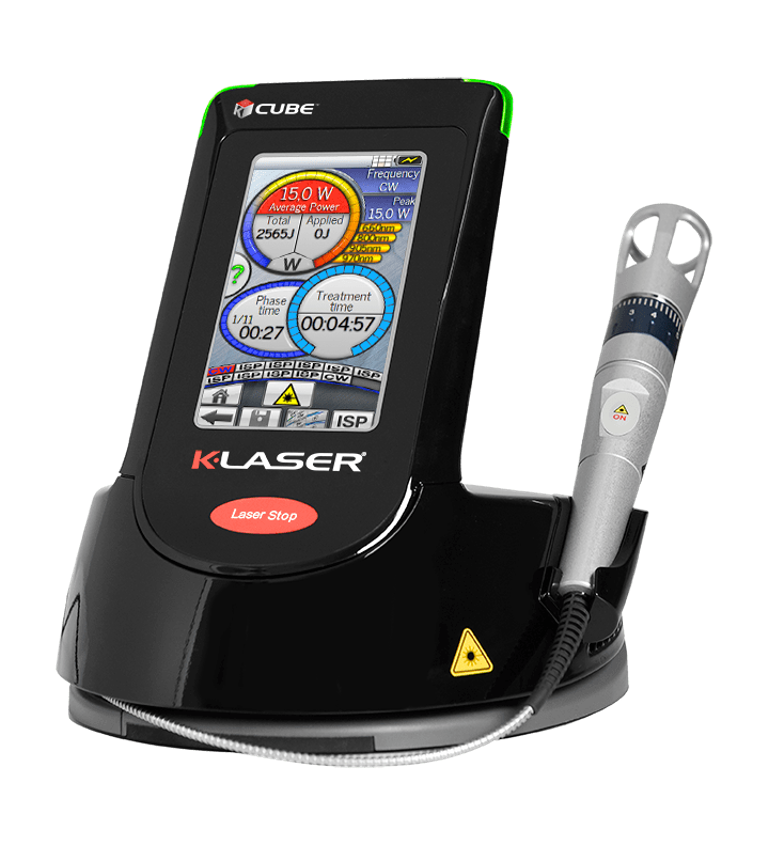
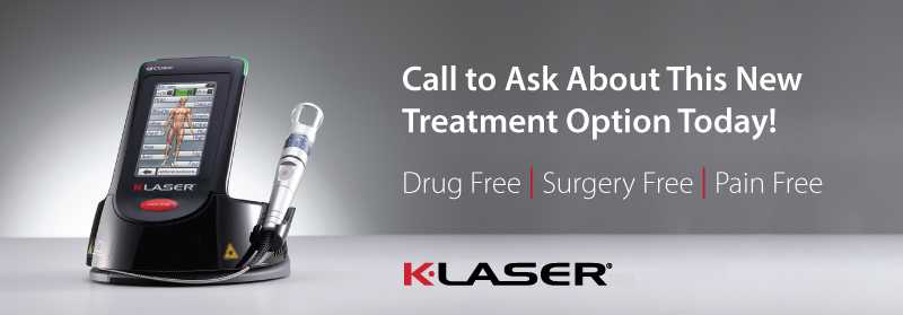
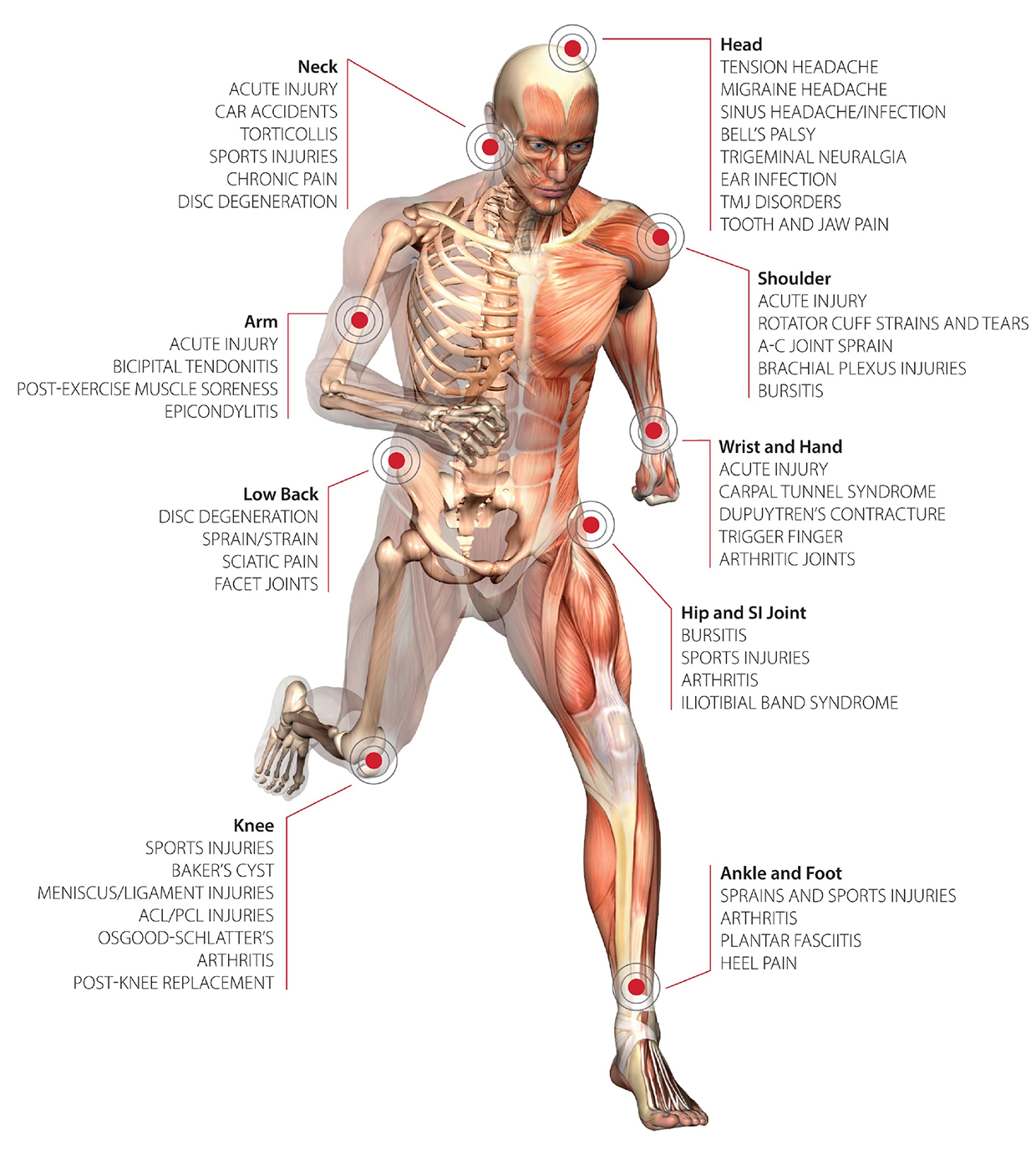
The human body reacts to light: when exposed to sunlight, our skin turns darker, vitamin D is boosted, larger quantities of serotonin (the "hormone of happiness") are released in the brain - just to mention some. These reactions are mediated by molecules that react to light. Over 50 years of research have unravelled which wavelengths of light can be damaging (UV light for example) and which trigger positive reactions. These bio-medical findings have been merged with advanced LASER technology to produce medical devices able to optimise the positive effects of light stimulation. HOW DOES IT WORK? Laser therapy uses selected wavelengths of light to stimulate key molecules in tissues. This activates a cascade of photochemical reactions that boosts cellular metabolism, also improving circulation, oxygenation and absorption of nutrients. This creates an optimal healing environment for tissues to recover. As the injured area returns to normal, function is restored and pain is relieved. Laser therapy is proven successful on a vast range of applications - from acute injuries to chronic pain, from musculoskeletal conditions to wounds. It is a safe and non-invasive technique that promotes the body’s own reparative processes. LASER THERAPY IS DEVICE-DEPENDANT Models and brands can differ significantly. Some devices have limited therapeutic action and produce mixed outcomes. Devices categorized as ‘Class IIIb’ can emit a very limited amount of energy, requiring long sessions to produce the therapeutic dosage needed. The new generation of lasers, called ‘Class IV’, are more powerful with applications taking only few minutes. The most advanced therapeutic Class IV laser, featuring 4 different wavelengths, has a success rate of 90% and 0,07% adverse reaction (NHS data).
ARE THERE SIDE EFFECTS?
The therapy doesn’t induce allergic reactions because it doesn’t introduce anything foreign into the body. Light is energy, and laser therapy ‘simply’ provides carefully calibrated energy to tissues to boost their natural reparative processes. The treatment is not painful to the vast majority of patients. When treated with a Class IV laser you can perceive a warm sensation that patients describe as soothing and relaxing - whilst treatments with the weaker Class IIIb lasers can’t be perceived. Adverse reactions are very rare, mild and temporary. A moderate increase in pain may happen in patients with nerve hypersensitivity during the first couple of sessions. There are no known side effects.
IS LASER THERAPY FOR ME?
Laser therapy is suitable for any age group, skin tone, and body size. From athletes to pregnant women, from injured children to infirm elderly people: an advanced therapeutic Laser can tailor the treatment to the specific individual. It’s ideal for long-term maintenance of incurable conditions such as osteoarthritis, as an alternative or in conjunction with ongoing medication. In elite sport teams, athletes are treated proactively to prevent the onset of inflammations and tissue damages during training. A course of treatments can span from 4 sessions for acute cases, to 12 or more for chronic conditions, with ideally two applications a week
How K•Laser Can Help
Laser therapy uses selected wavelengths of light to stimulate key molecules in human tissues. Decades of medical research have identified the wavelengths, energy level and frequencies that induce changes in cellular metabolism (Photobiostimulation), for instance melanin absorbing sunlight changes skins pigmentation.
K-Laser delivers energy from superficial to deep tissues activating a cascade of photochemical reactions that promotes cell function, enabling treated tissues to accelerate the stages of the healing process and reduce pain sensation. This is a safe and non-invasive technique that uses the body’s own reparative processes.
K-Laser has been used in various published studies as an innovative treatment for foot pathologies. Not only its mechanism of action improve healing, blood flow and pain, but can treat toenail infections.
Applications Of K•Laser Within Podiatry
- Metatarsalgia
- Hallux valgus-bursitis
- Plantar Fasciitis
- Tarsal Tunnel Syndrome
- Arthritis-osteoarthritis
- Interdigital neuritis
- Heel spur
- Achilles tendonitis
- Morton’s neuroma
- Post-sprain oedema
- Diabetic neuropathy
- Tibia-tarsal distortion
- Diabetic ulcers
- Warts
- Fungal Nails
The Therapeutic Effects Of K•Laser
1. INCREASED METABOLIC ACTIVITY
By stimulating key molecules (haemoglobin, water, cytochrome c) K-Laser therapy improves tissue oxygenation, ATP synthesis and intercellular exchanges, activating a cascade of photo-chemical reactions that speeds up the healing, regenerative process.
2. IMPROVED VASCULAR ACTIVITY
K-Laser therapy induces vasodilation in the treated area and promotes angiogenesis, thus improving blood circulation, optimising tissue nutrition and removal of cell waste and inflammatory factors. K-Laser boosts the lymphatic drainage system as well. As a result, there is a reduction in swelling caused by bruising or local inflammation.
3. ANTI INFLAMMATION
Laser therapy accelerates the termination of the inflammatory process. Interleukin-1, a cytokine that has immune and pro-inflammatory actions, is proven to be reduced by laser treatment, and
the antioxidant Super Oxide Dismutase (SOD) levels are enhanced, helping reduce damaging free-radical activity.
4. IMPROVED NERVE FUNCTION
Laser therapy is proven to facilitate the normalisation of nerve signal transmission in the autonomic, sensory, and motor neural pathways. Both Compound Muscle Action Potential (CMAP) and Nerve Latency values show improvement following laser treatment. It is also proven to stimulate axonal sprouting and cell regeneration in damaged nerves.
5. ANALGESIC EFFECT
Pain relief is the result of nerve activity alteration, reduced localised inflammation and swelling, proven to happen following a K-Laser therapy course.
6. ACCELERATED TISSUE REPAIR AND CELL GROWTH
K-Laser wavelengths, power and pulse frequencies penetrate at depth into tissues and accelerate cellular reproduction and growth by increasing their metabolism. As a result, the cells of tendons, ligaments, muscles and bones are repaired faster.
7. REDUCED FIBROUS TISSUE FORMATION
Early K-Laser Therapy can prevent the accumulation of scar tissue following tears, burns or surgery. Once healed the tissues are proven to be more elastic with minimal scarring, reducing the onset of chronic pain associated with scars.
8. IMMUNOREGULATION
Acceleration of Leukocytic activity and enhanced Lymphocytic response have been observed in treated tissues (enhances the removal of nonviable tissue components and rapid repair). Wounds treated with the K-Laser are more resilient to secondary infections.
9. FASTER WOUND HEALING
Laser therapy optimises collagen and elastin deposition: wounds treated with the K-Laser are proven to heal faster, with increased tensile strength preventing further breakdowns. K-Laser therapy is effective on Chronic Diabetic Ulcers and traumatic wounds.
10. ACUPUNCTURE POINTS
K-Laser therapy stimulates acupuncture points allowing needleless acupuncture.
